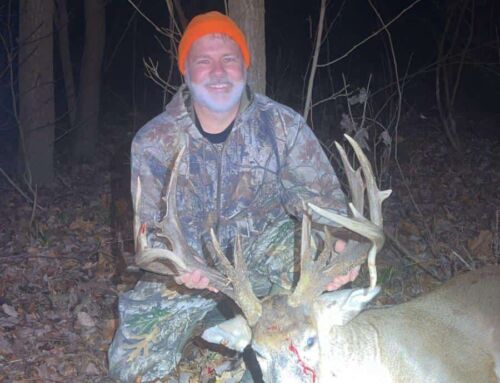According to Penn State’s Deer Forest Blog, a lot of things can go wrong during the 160- to 170- day growing season when bucks put on their new racks in spring and summer.
Biologist Jeannine Fleegle notes that antler injuries are fairly common with wild deer. When a growing antler is damaged or broken, it bleeds profusely, and blood can fill the inside of a velvet beam or tine. When the antler starts to harden and mineralize later this summer, a heavy, swollen, club-like antler can appear.
Common question I get: How long will a buck carry that abnormal rack after the injury year? Fleegle points out that the deformity could persist for several sets of antlers or for the rest of the buck’s life if it does not heal.
You have seen 3- and even 4-beamed freaks here on BIG DEER blog. What causes those multiple beams?
“Cells in the pedicle (antler base at skull) hold the key to antler growth,” Fleegle writes. “Transplanting pedicle cells to another part of the body can result in antler growth from that area. Cells have even been transplanted to the lower leg of a deer and an antler has grown from the leg. Crazy! Bucks with 2-plus antlers in the wild likely sustained an injury to the pedicle disrupting and redistributing pedicle cells. Since these cells grow antlers no matter where they are, poof! Antler number 3 can appear.”
You have probably heard of the “contralateral effect,” where an injury to one side of a buck’s body causes an antler deformity on the opposite side of the rack (i.e. a buck that is clipped by a car on its left hind quarter grows a freak beam or tines on the right side). Researchers have opined on this for years, but “the reasons are unknown,” says Fleegle. “And exactly how the antler will be altered from its original size or shape is anyone’s guess.”






